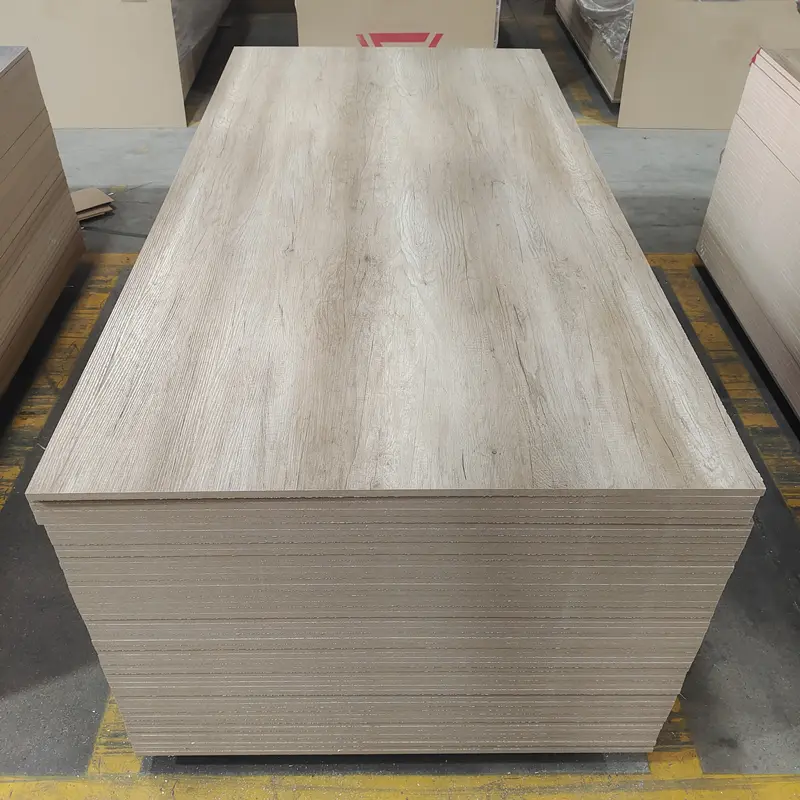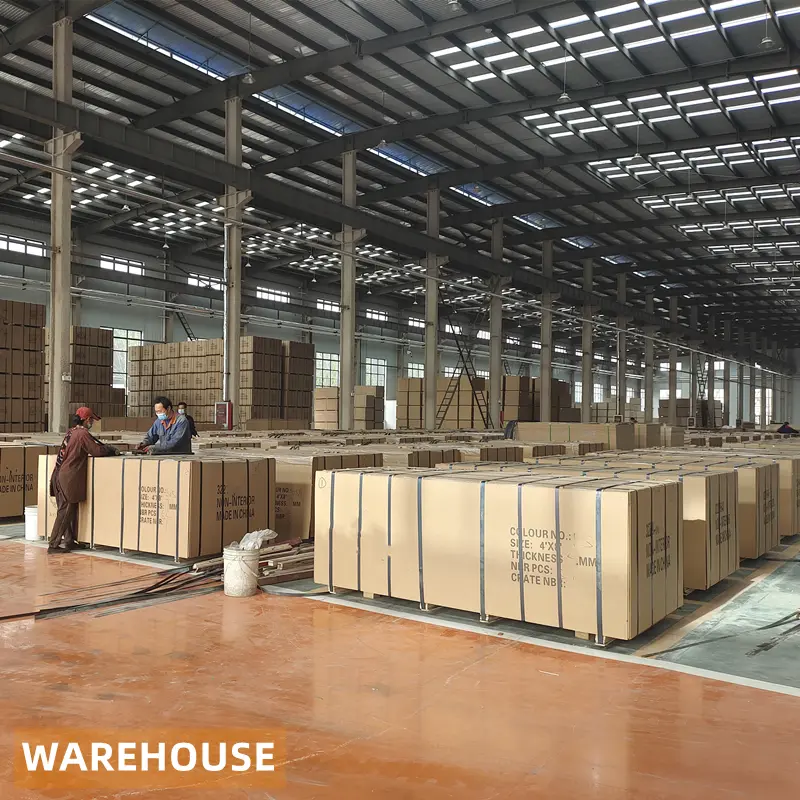This article dives deep into the world of chipboard and cardboard, helping you understand the key differences between chipboard and cardboard to determine the superior packaging choice for your specific needs. Whether you’re shipping delicate electronics, heavy furniture, or anything in between, we’ll equip you with the knowledge to choose the right packaging and optimize your shipping costs while minimizing your environmental impact. From furniture manufacturers to interior designers, this guide is essential reading for any business involved in product distribution.
What is Chipboard and How is it Made?
Chipboard, also known as particleboard, is an engineered wood product crafted from recycled paper fibers, wood chips, and sawdust. These materials are bonded together using a strong resin adhesive under high pressure and temperature. This process creates a dense, uniform, and rigid material, although it’s generally less strong than solid wood or plywood.
The manufacturing process of chipboard offers an eco-friendly approach, often utilizing waste materials from other wood processing industries. It’s a cost-effective choice for many applications, particularly where a smooth, even surface is desired. It’s often used in applications where the material won’t be directly exposed to harsh conditions or excessive moisture, such as backing for furniture, in cereal boxes, or as protective layers in packaging. It is also easy to laminate or print on, making it a good option for branding and customization.
What is Cardboard and What Are Its Different Types?
Cardboard, in the context of packaging material, most often refers to corrugated cardboard. This material is composed of a fluted corrugated sheet sandwiched between two flat linerboards. The flutes (the wavy inner layer) provide significant strength and cushioning, making it ideal for protecting items during shipping and handling.
There are several types of cardboard, categorized primarily by the number of layers and the type of fluting. Single-wall cardboard (one fluted layer) is the most common, while double-wall (two fluted layers) and triple-wall (three fluted layers) offer increasing levels of strength and protection for heavier or more fragile items. Different flute sizes (A, B, C, E, and F) also provide varying degrees of cushioning and crush resistance. Cardboard is commonly used for shipping boxes and retail displays. Cardboard is recyclable, making it another good choice for those who are eco-conscious.
Chipboard vs. Cardboard: A Head-to-Head Comparison
| Feature | Chipboard | Cardboard (Corrugated) |
|---|---|---|
| Composition | Recycled paper fibers, wood chips, sawdust, resin | Fluted corrugated sheet sandwiched between two linerboards |
| Strength | Lower than corrugated cardboard | Higher, especially in the direction of the flutes |
| Durability | Susceptible to moisture damage; less resistant to bending and impact | More resistant to moisture (depending on treatment); better impact resistance due to fluting |
| Weight | Denser and heavier than corrugated cardboard for the same thickness | Lighter, due to the air pockets within the fluting |
| Cushioning | Minimal | Excellent, provided by the fluting |
| Cost | Generally less expensive | Can be more expensive, especially for multi-wall or specialized types |
| Customization | Easy to print on, laminate, and cover with veneers | Easy to print on, cut, and fold into various shapes; readily accepts labels and tape |
| Recyclability | Recyclable (depending on local regulations and the type of resin used) | Highly recyclable and often made from recycled paper |
| Common Uses | Backing for furniture, cereal boxes, protective sheets, stationery | Shipping boxes, retail displays, packaging inserts, protective padding |
This table highlights the key differences between chipboard and cardboard. Understanding these fundamental distinctions is the first step in making an informed decision for your packaging needs.
What are the Environmental Impacts of Chipboard and Cardboard?
Both chipboard and cardboard are generally considered eco-friendly packaging options compared to materials like plastic. However, there are nuances to consider. Chipboard is often made from recycled materials, reducing the demand for virgin wood pulp. However, the resins used to bind the fibers can sometimes contain formaldehyde, a volatile organic compound (VOC) that can have negative environmental and health impacts. Choosing chipboard that meets E1/E0 formaldehyde emission standards is crucial.
Cardboard is also highly recyclable and biodegradable. The production of corrugated cardboard can be energy-intensive, but the use of recycled paper and cardboard materials in its manufacture significantly reduces its carbon footprint. Look for cardboard certified by organizations like the Forest Stewardship Council (FSC) to ensure it comes from responsibly managed forests. Recyclability is a key consideration for both materials.
Which is More Cost-Effective: Chipboard or Cardboard?
Chipboard generally has a lower material cost than corrugated cardboard. This is because it’s made from lower-cost recycled materials and the manufacturing process is less complex. This makes it a cost-effective choice for applications where high strength and cushioning are not paramount.
While cardboard may have a higher initial material cost, especially for multi-wall varieties, it can potentially reduce overall shipping costs. Its lighter weight can lead to lower freight charges, and its superior protection can minimize product damage and returns. The best choice depends on a careful assessment of your specific packaging needs, product value, and shipping distances. A product such as MDF can be used as an alternative in a number of cases.

How Does Customization Differ Between Chipboard and Cardboard?
Both chipboard and cardboard offer excellent customization options, allowing you to create packaging that reflects your brand identity and enhances the customer experience. Chipboard‘s smooth surface is ideal for high-quality printing, allowing for vibrant colors and intricate designs and labels. It can also be easily laminated with decorative papers or veneers, giving it a premium look and feel.
Cardboard, particularly corrugated cardboard, is incredibly versatile in terms of structural design. It can be easily cut, scored, and folded into a wide variety of shapes and sizes, creating custom boxes, inserts, and displays. Custom packaging is a specialty of Demeter. Printing directly onto cardboard is also straightforward, and it readily accepts labels and tape for branding and sealing. Check out our melamine chipboard wood grain solid color page to find out more.
What are the Strength and Durability Considerations?
Strength and durability are critical factors when choosing packaging material. Corrugated cardboard provides superior strength and impact resistance compared to chipboard, thanks to its fluted structure. This makes it the better choice for protecting heavier or more fragile items during handling and transportation.
Chipboard offers less resistance to bending and impact. It’s also more susceptible to moisture damage, which can weaken the material and compromise its integrity. While chipboard can be suitable for lightweight items or as a protective layer within a larger packaging system, it’s generally not recommended for heavy-duty applications or situations where exposure to moisture is likely.
When Should You Choose Chipboard for Packaging?
Choose chipboard when:
- You need a cost-effective solution for lightweight items.
- The primary function of the packaging is to provide a rigid, flat surface.
- You need a smooth surface for high-quality printing or lamination.
- The packaging will not be subjected to significant stress, impact, or moisture.
- Examples: backing for notepads, dividers in boxes, stiffeners for envelopes, cereal boxes.
When is Cardboard the Better Packaging Solution?
Cardboard is ideal when:
- You need to protect items from damage during shipping and handling.
- The packaging needs to be strong and durable.
- You require cushioning to absorb shocks and vibrations.
- Weight is a consideration, and you need a lightweight yet strong material.
- Examples: shipping boxes, retail displays, packaging inserts for fragile items, furniture and appliances.

How do Logistics and Handling Factor into the Choice?
Logistics and handling significantly influence the chipboard vs cardboard decision. Cardboard, being lighter and more resilient, is generally easier and cheaper to transport. Its ability to withstand stacking and rough handling makes it well-suited for complex supply chains.
Chipboard, while denser and potentially more space-efficient in some configurations, is more prone to damage during transit. Its lack of cushioning means that products packaged in chipboard may require additional protective measures, such as bubble wrap or foam inserts, which can add to the overall cost and complexity. For robust solutions, take a look at our melamine paper for plywood page.
A First-Hand Perspective from Allen (Demeter Factory, China):
"As a factory owner specializing in wood-based panel products and decorative materials, I’ve seen firsthand the different applications of chipboard and cardboard in packaging. We use chipboard extensively for internal packaging of our melamine-faced boards and decorative papers, providing a rigid and protective layer during transport within our factory and to nearby customers. It’s cost-effective and works well in that controlled environment."
"However, for exporting our products to the USA, North America, Europe, and Australia, we rely heavily on corrugated cardboard. We understand that our customers, like Mark Thompson, a company owner and procurement officer in the USA, prioritize quality and timely delivery. Cardboard boxes, especially double-wall and triple-wall varieties, offer the necessary protection to ensure our products arrive in perfect condition, even after long sea voyages and multiple handling points. We also appreciate the customization options of cardboard, allowing us to print our brand logo and product information directly onto the boxes."
"One of the biggest pain points we’ve addressed is communication with our customers. We’ve invested in training our sales representatives to be more responsive and proactive, ensuring clear and efficient communication throughout the entire ordering and shipping process. This helps us avoid delays and misunderstandings, building trust and long-term relationships with our clients." We have a full range of products, for more, check out our plywood 12mm for Furniture Cabinet Kitchen wardrobe.
Addressing Customer Concerns (Like Mark Thompson’s):
We understand that customers like Mark are highly sensitive to quality and price. We address these concerns through:
- Rigorous Quality Control: We implement strict quality inspection procedures at every stage of production, checking for surface finish, core quality of MDF, color consistency, and print accuracy.
- Certifications: We ensure our products comply with relevant industry standards, including CARB P2, E1/E0, and FSC certifications, providing our customers with peace of mind.
- Competitive Pricing: We leverage our efficient production lines and economies of scale to offer competitive pricing without compromising on quality.
- Transparent Communication: We provide clear and timely updates on order status, shipping schedules, and any potential delays.
- Logistics Solutions: We work with reliable logistics partners to ensure efficient and cost-effective shipping, minimizing transit times and handling risks.
- Addressing moisture concerns: We ensure that the moisture content levels of our product are up to standard, especially before they are shipped out.

Key Takeaways:
- Chipboard is a cost-effective, recycled paper product suitable for lightweight applications and internal packaging.
- Corrugated cardboard offers superior strength, cushioning, and protection, making it ideal for shipping and handling.
- Both materials are recyclable and offer customization options.
- Consider the weight, fragility, and shipping distance of your products when choosing between chipboard and cardboard.
- Prioritize clear communication with your supplier to avoid delays and ensure quality.
- Look for certifications (CARB P2, E1/E0, FSC) to ensure environmental responsibility and product quality.
- The use of melamine paper provides an excellent surface finish for both chipboard and other wood-based panels.
- Using the right packaging material can save on shipping costs
- Understand the difference between chipboard and other similar products will help make the right purchasing decision.
- Customization transforms packaging into a powerful marketing tool.
Post time: 03-08-2025











